Today we look at a unique piece of gaming hardware – A rarely-seen footnote in Nintendo’s illustrious history. The Astro Boy Game boy Light was arguably the best incarnation of Nintendo’s handheld system, but few know of its existence. This edition is even more of a hidden treasure amongst revisions. This variant was even more exclusive than the standard edition. Somehow I managed to find one of these on Ebay for a very good price about a decade ago, and it’s been a treasured part of my collection throughout that time. However, I felt it wasn’t getting the use it deserves, being in my loft, so I decided to sell it. But before I did, I wanted to cover this beautiful and interesting piece of hardware, one more time. I’ve covered this particular system in a very early Pug Hoof Gaming video, but I felt it was worth covering in much more detail.
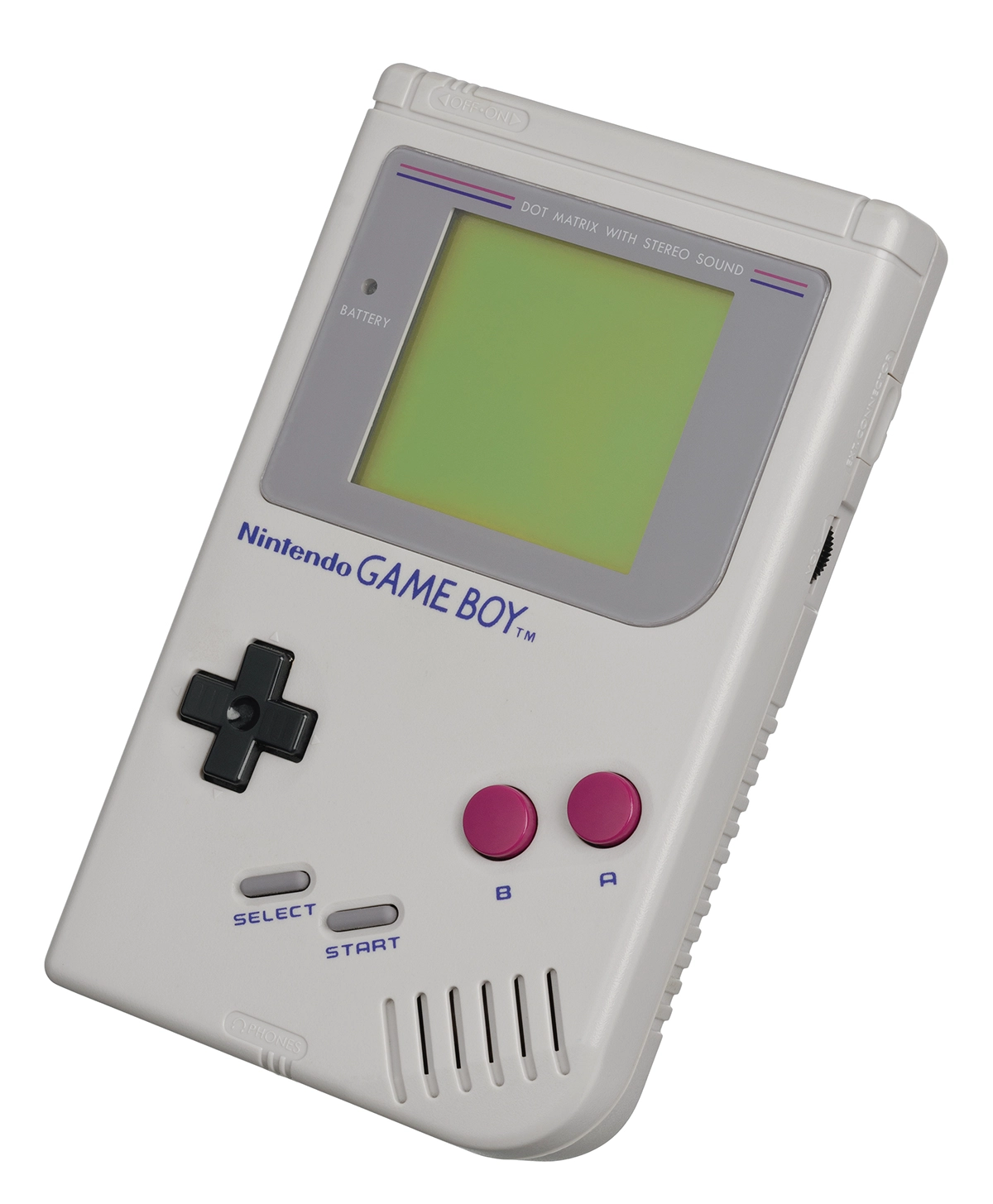
The DMG’s Achilles Heel
As brilliant and game-changing the original system was, there are two criticisms that could be made towards it. The system’s monochrome display was responsible for both of them. When pitted against Atari’s Lynx and SEGA’s Game Gear, Nintendo’s console lacked a backlit screen and any colour beyond shades of green. In practice, this limitation worked to the console’s favour, offering a far greater battery length over its rivals. Of course, this is an important factor for a portable system. Nintendo’s infamous “Lateral Thinking With Seasoned Hardware” approach was to thank for this. Rather than make a powerful, colourful system with a backlight (and a high price), Nintendo went a different way. Instead, they would instead use cheaper, older chips and parts, but use them in new and intelligent ways. And so, it was a low-cost, low-powered monochrome system.
This design choice leads to two problems I mentioned earlier. Despite the console having an incredible battery life with 4 x AA batteries, the screen suffers due to its monochrome nature. This 160 x 144-pixel screen suffered from terrible motion blur, becoming a smeared mess in most cases. But its worst fault was the lack of a backlight. Unless there is a suitable light source nearby (the sun, indoor lighting, etc.), the system became unusable. To combat this, there was a healthy aftermarket of magnifiers, lights and so on – Bulky implements that clip onto an already heavy system (especially when filled with batteries). By the time you were done, this portable system was much less so.
Back To The Drawing Board
It took Nintendo a while to attempt to fix the screen issue, and they took a two-pronged approach. In 1994, nearly 5 years after the release of the original portable, an accessory for the Super Nintendo Entertainment System hit stores, to allow these normally portable games to be played on the television. As well as solving the issues with a small, blurry display, the accessory also enabled the of colour palettes that could turn the 4-colour screen into something a bit more palatable. It did a lot more than that, but I’ve covered the device in a lot more detail elsewhere.
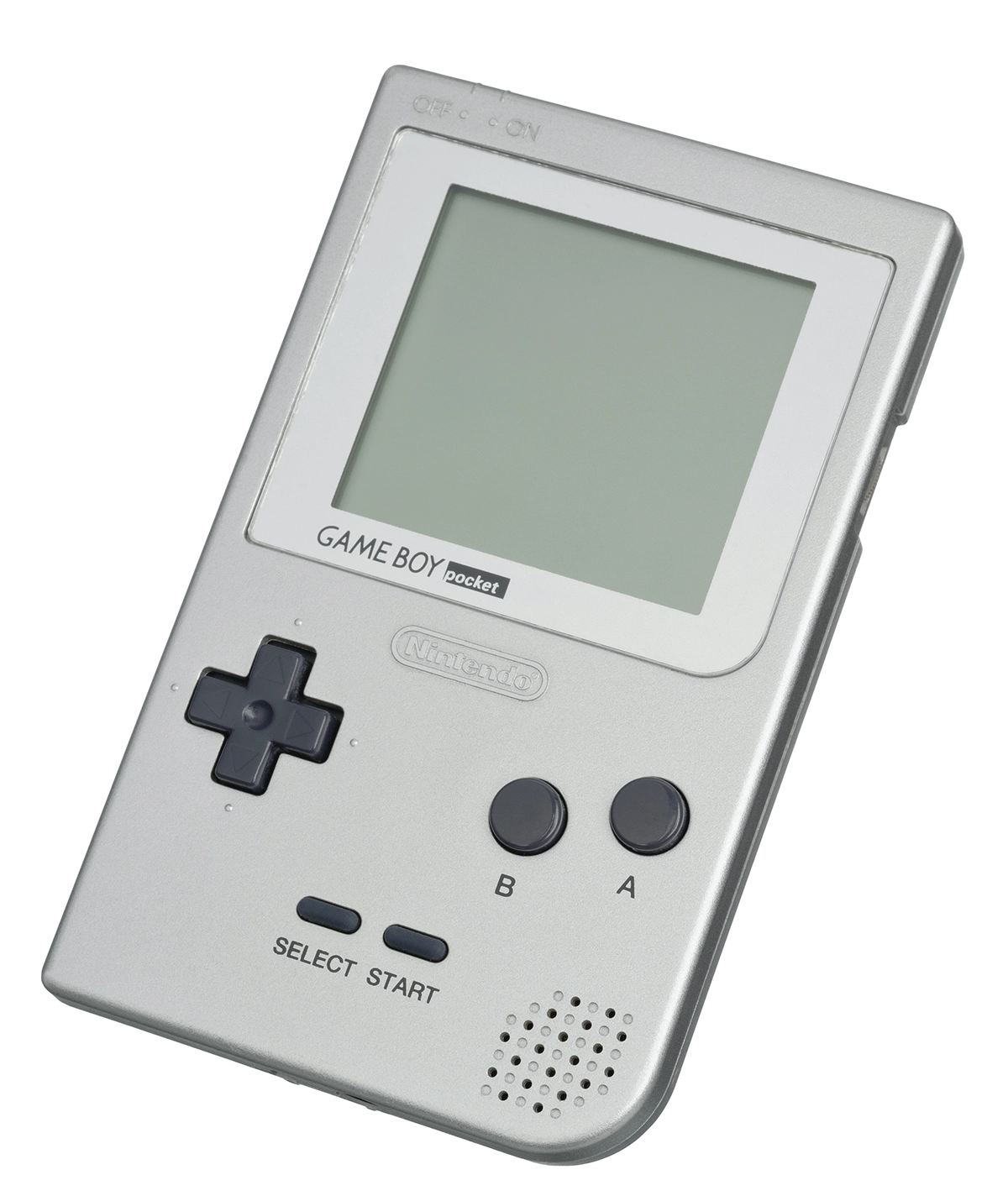
In 1996, Nintendo saw fit to re-energise the line with the Pocket. A smaller, more portable system that only used 2 AAA batteries, it used a better monochrome, black & white screen with reduced motion blur. It might have fixed some viewing and portability issues that users had, but it still lacked a backlight, and as the whole console line was about to hit a second wind, it was beginning to show its age.
The True Successor?
In Japan, Nintendo’s system was going from strength to strength. 1996 saw the release of a little-known game that pitted cartoon monsters against each other. It took a couple of years for Pokemon to take over the world, but at the very least it gave a massive boost to the console, years after its original 1989 release.
But it was clear that the system was becoming long in the tooth, and a successor would have to be developed. At the time, rumours persisted about a 32-bit successor under the name “Project Atlantis”, which never arrived. The true Color successor wasn’t released in Japan until October 1998. Meanwhile, the final original revision would come just a few months before, in April 1998.
Light – The Ultimate Handheld?
The Light console remains a revision that never made its way to the West. It’s slightly larger than the Pocket but now runs on 2 x AA batteries. The screen was similar to the Pocket’s but earned its “Light” moniker with a brand new feature. Its power switch has three positions – “Off”, “On” and “Light”. This third position switches on an electroluminescent backlight, similar to some watches of the time. This aqua-coloured light finally allows the system to be played in dark/poor light without additional peripherals.
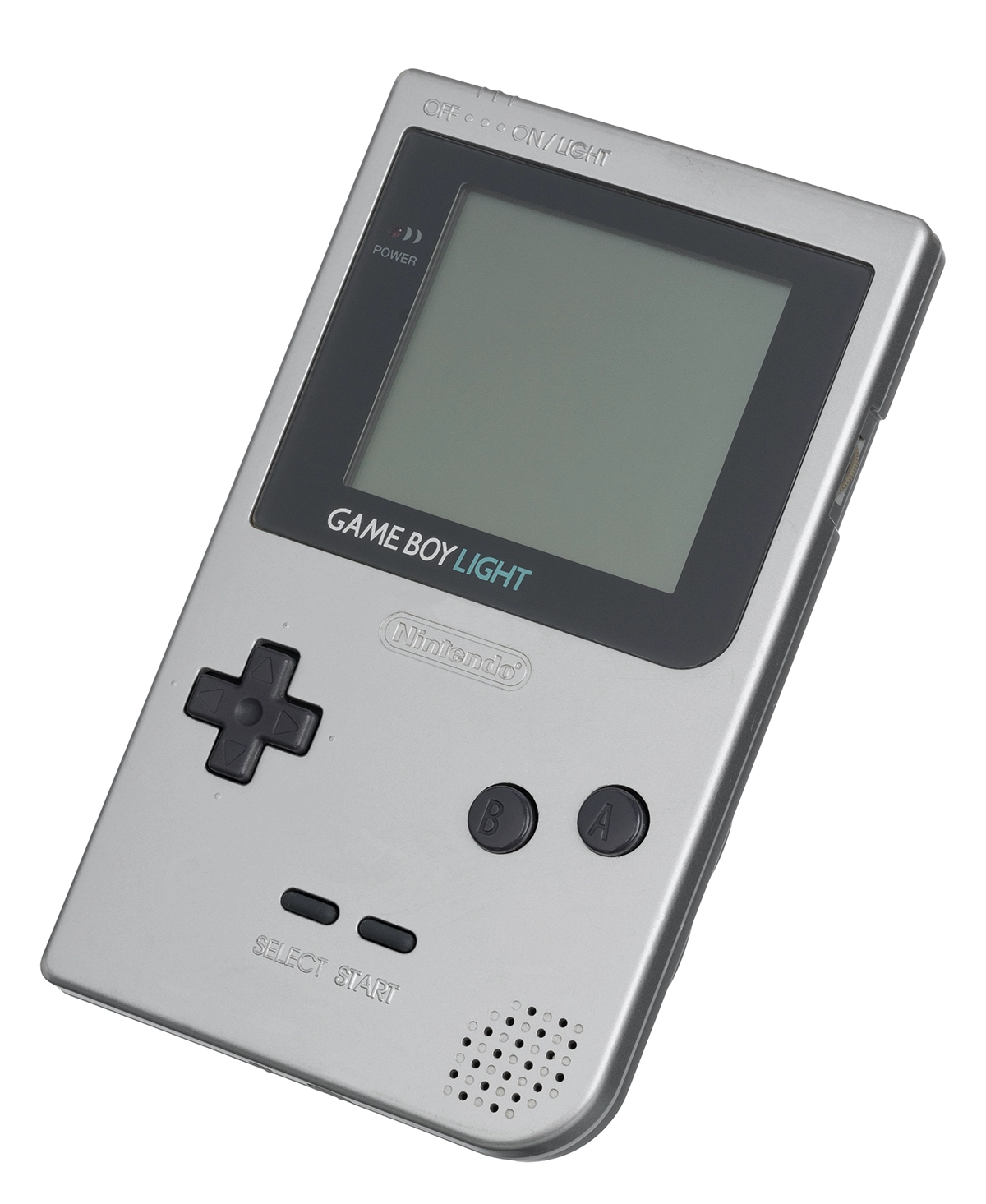
It is so strange to see this variation’s release date was so late in the original system’s life, as the Color edition was only months away. Released in Gold or Silver-coloured shells, it boasts a 20-hour battery life with the light turned off (compared to the Pocket’s 10 hours). With the light switched on, the 12-hour battery duration is not to be sniffed at.
Heavenly Light
Let’s not play down the improvement a simple backlight makes to playing these old 8-bit handheld games. There is a reason people are putting in modern IPS displays into their old systems. Finally being able to play the console without having to position your system to get the perfect angle against a nearby light source is a revelation. It only took Nintendo ten years for them to finally put a backlight into the system. And then just a few months for them to take it away with the Color.
The Light came just in time for the duo of Camera and Printer addons for the console, which also arrived in Japan in 1998. And with Pokemon-mania hitting the world, Nintendo’s humble handheld would be with us for a lot longer than anticipated.
Rarer Than Rare – The Astro Boy Game Boy Light Edition
But what of this unusual Light variant you see plastered over this page? I picked up this variant when I was trying to obtain a Light system for myself, and it’s pretty unique.
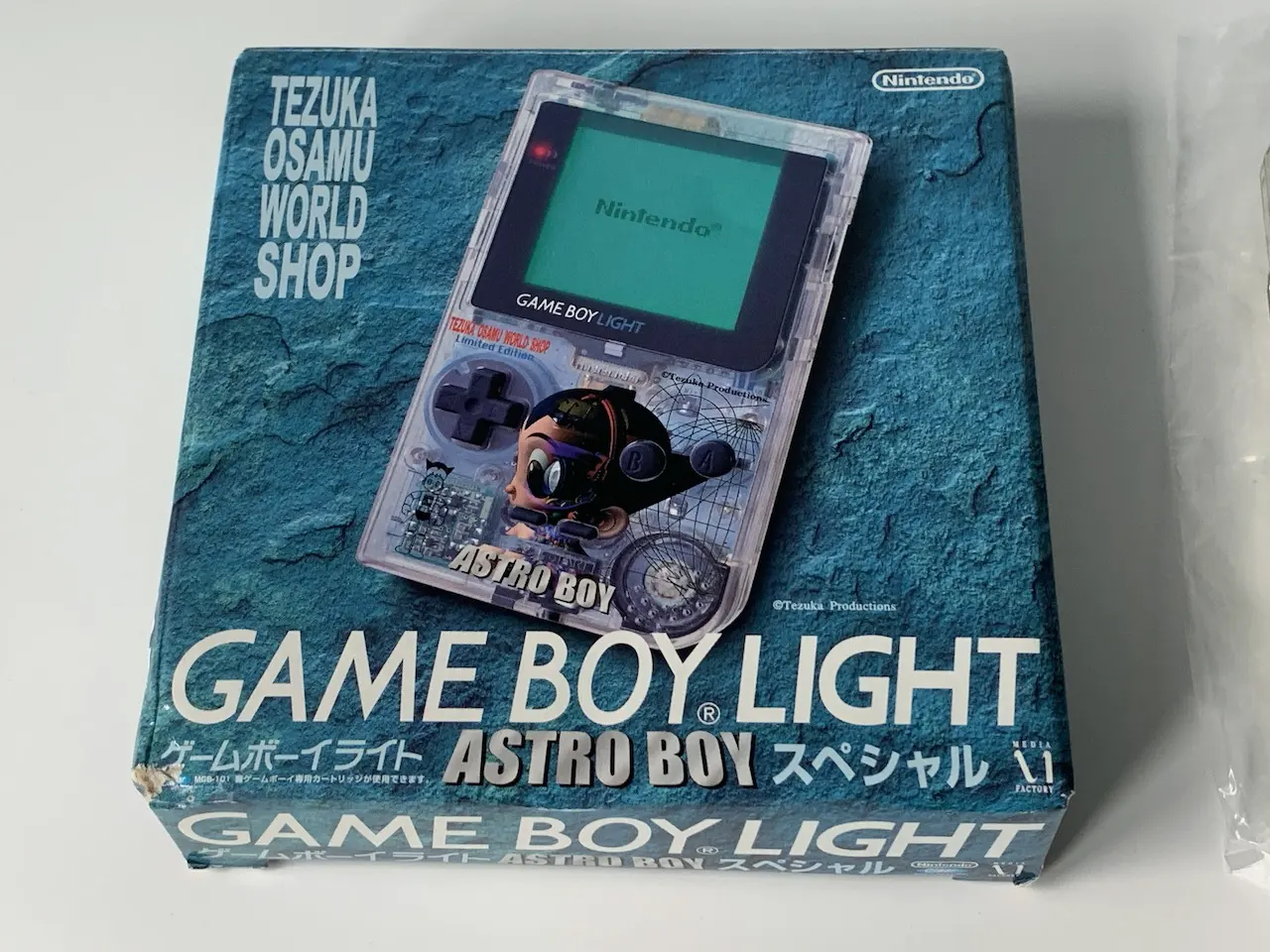
Several limited-edition models of this system exist. The model you see here is one of two exclusives only available at Tezuka Osamu World Shop. Tezuka Osamu is one of the most prolific manga artists in history, and amongst his many achievements, he created the Astro Boy character. It’s this character that is emblazoned on this particular Astro Boy Game Boy Light.
I must admit, I know little of the character, so the design is a little lost on me. This is a gorgeous variant – It’s made of a smooth, completely opaque plastic. As we know, clear handhelds always look great. It also feels great in the hands, even more so than earlier revisions.
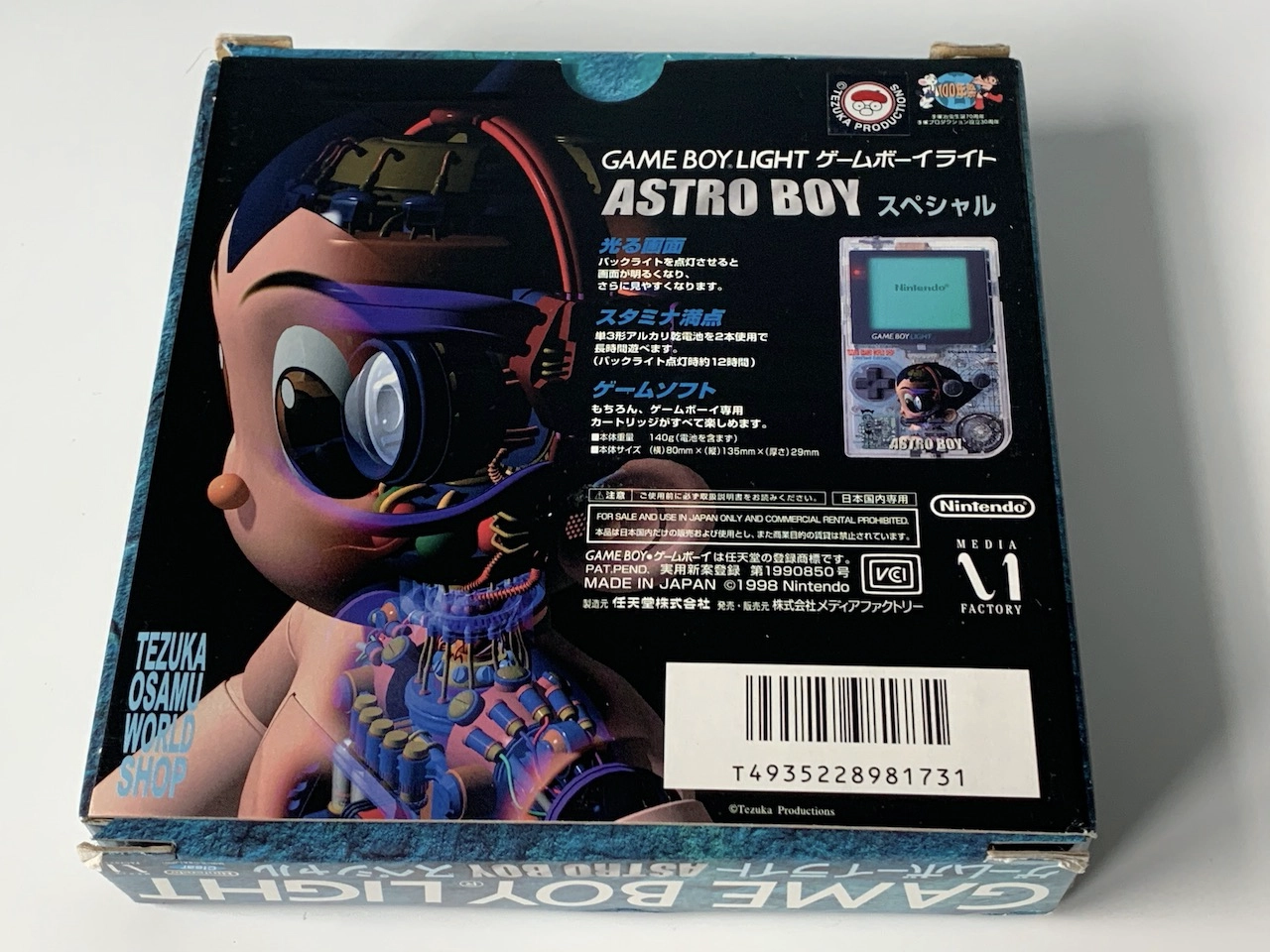
The two Tezuka Osamu World Shop variants (the other being a clear red model) aren’t too difficult to obtain, but they do fetch for a high price online. I was extremely lucky in obtaining this for between £80 in around 2008. These days they go for a lot more! Weirdly, at the time I found it easier to get this version than it was to get one of the standard Gold or Silver models.
I’ve Seen The Light
Outside of the rare nature of this particular console, it’s a lovely system to play with. The screen retains the cleaner dot-based image of the Pocket, which looks absolutely gorgeous up close. Then, you switch the light on and “Wow!” – It really makes a difference. The electroluminescent light in this Astro Boy Light is the perfect brightness, it’s not too bright at all. It’s easy to look at during the daytime but doesn’t burn your retinas in pitch-black situations. It’s such a gorgeous aqua colour, and I’ve never seen a display this large using one of these backlights before.
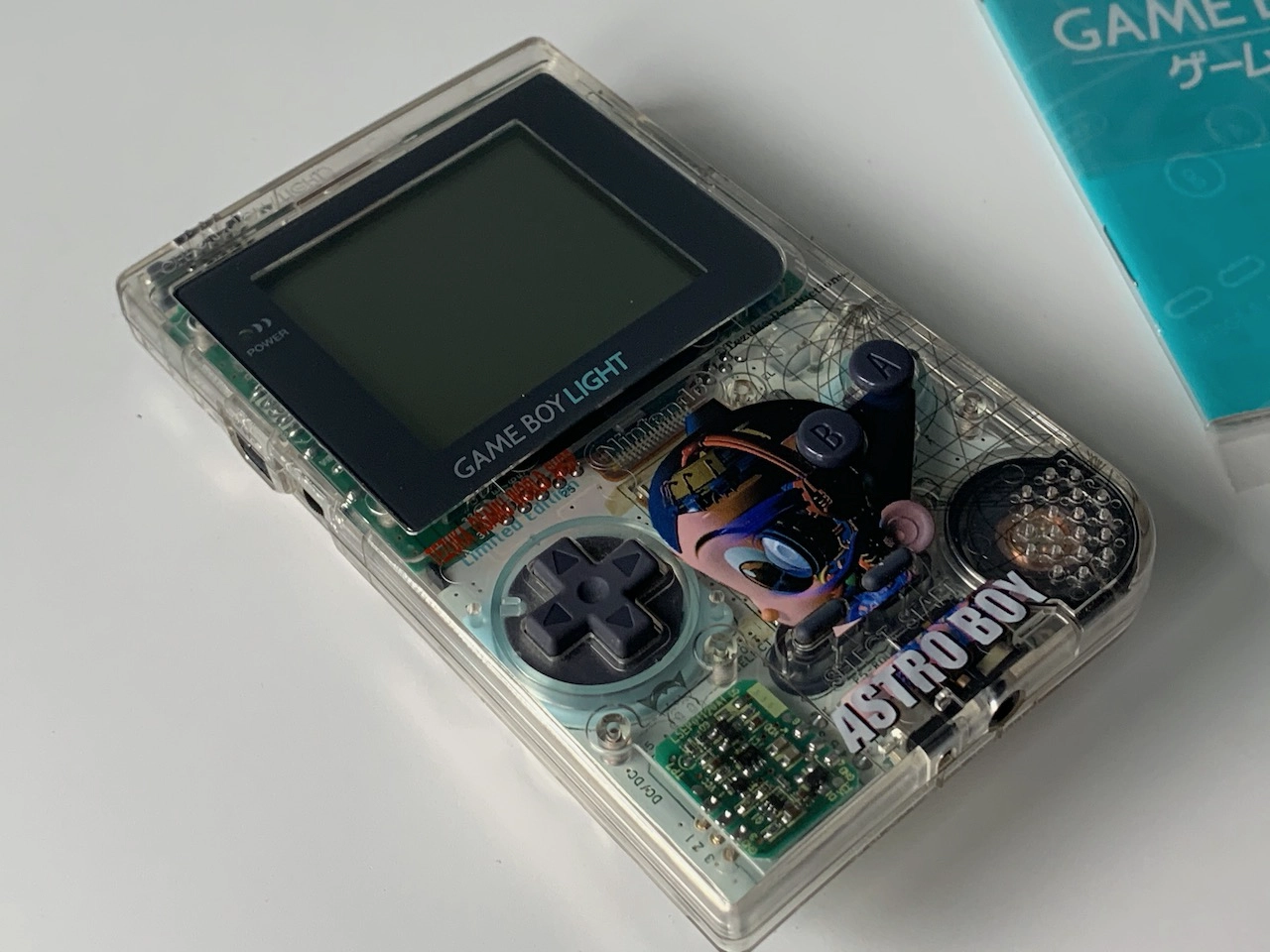
Is this the ultimate 8-bit handheld system? Well, yes. Granted, with modifications its more than possible (and arguably more affordable) to kit a standard DMG or Pocket with a modern backlight screen (or add a backlight to the original display), but that comes with the caveat of making irreversible changes to finitely-available technology that isn’t being manufactured anymore. The console just works, and very well for that matter.
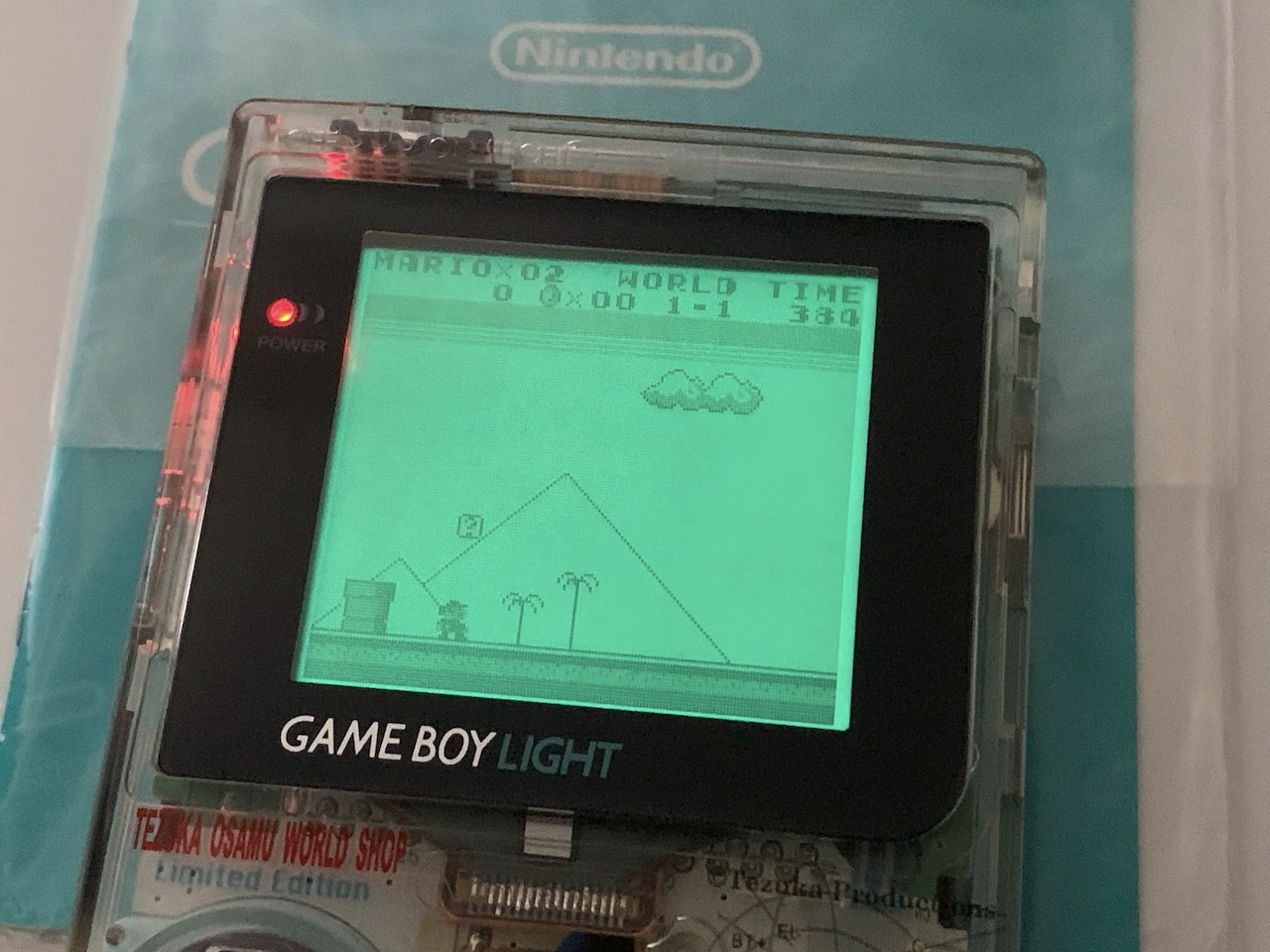
Is it worth obtaining one now? I’m not so sure. Retro is only getting more expensive, and with more people being aware of treasures like this Astro Boy Game Boy Light, demand exceeds supply. If you see one at a price you’re happy with, you will not be disappointed. But for everyone else, there are other ways to comfortably play these games.
